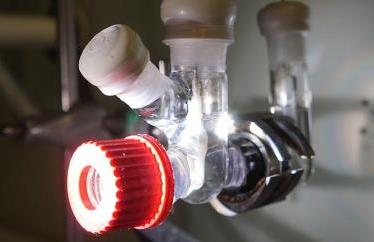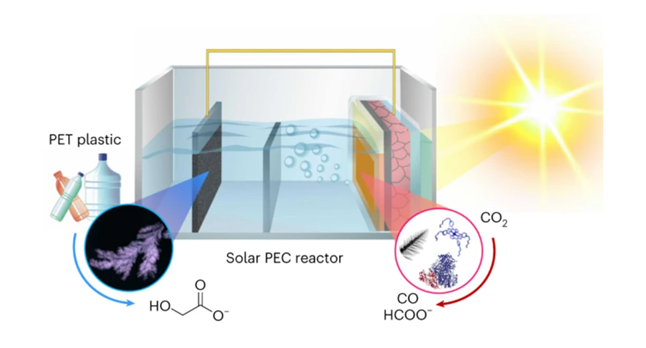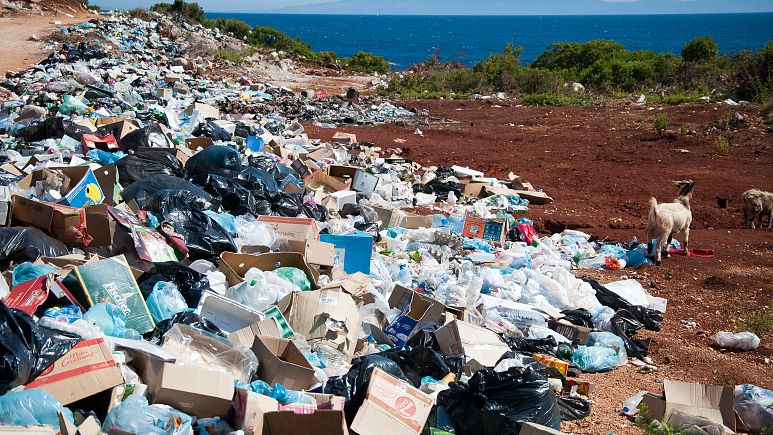nCa Report
The breakthrough is here. —– The researchers at the Cambridge University have developed a reactor that runs on solar power and converts greenhouses gases into sustainable fuel and plastic waste into an essential ingredient for the cosmetics industry.
Professor Erwin Reisner is the lead author of the paper covering the findings of the research with Dr. Subhajit Bhattacharjee and Dr Motiar Rahaman as the co-first authors.
A decisive step toward circular economy, the reactor converts carbon dioxide (CO2) and plastics into different products that are useful in a range of industries. In tests, CO2 was converted into syngas, a key building block for sustainable liquid fuels, and plastic bottles were converted into glycolic acid, which is widely used in the cosmetics industry. The system can easily be tuned to produce different products by changing the type of catalyst used in the reactor.
The Cambridge University has reported the news in its press release:
“Converting waste into something useful using solar energy is a major goal of our research,” said Professor Erwin Reisner from the Yusuf Hamied Department of Chemistry, the paper’s senior author. “Plastic pollution is a huge problem worldwide, and often, many of the plastics we throw into recycling bins are incinerated or end up in landfill.”
“A solar-driven technology that could help to address plastic pollution and greenhouse gases at the same time could be a game-changer in the development of a circular economy,” said Subhajit Bhattacharjee, the paper’s co-first author.
“We also need something that’s tuneable, so that you can easily make changes depending on the final product you want,” said co-first author Dr Motiar Rahaman.
The Cambridge University press release further says that the researchers developed an integrated reactor with two separate compartments: one for plastic, and one for greenhouse gases. The reactor uses a light absorber based on perovskite – a promising alternative to silicon for next-generation solar cells.
The team designed different catalysts, which were integrated into the light absorber. By changing the catalyst, the researchers could then change the end product. Tests of the reactor under normal temperature and pressure conditions showed that the reactor could efficiently convert PET plastic bottles and CO2 into different carbon-based fuels such as CO, syngas or formate, in addition to glycolic acid. The Cambridge-developed reactor produced these products at a rate that is also much higher than conventional photocatalytic CO2 reduction processes.
“Generally, CO2 conversion requires a lot of energy, but with our system, basically you just shine a light at it, and it starts converting harmful products into something useful and sustainable,” said Rahaman. “Prior to this system, we didn’t have anything that could make high-value products selectively and efficiently.”
“What’s so special about this system is the versatility and tuneability – we’re making fairly simple carbon-based molecules right now, but in future, we could be able to tune the system to make far more complex products, just by changing the catalyst,” said Bhattacharjee.
Rebecca Ann Hughes, reporting for Euronews, says, “Approximately 300 million tonnes of plastic waste – an amount equivalent to the weight of the human population – are produced every year, according to the UN Environment Programme.
“However, only 9 per cent is recycled, leaving the rest to accumulate in landfills or pollute our oceans with microplastics.
“Chemical recycling, where plastic is converted into fuels, requires extremely high temperatures. The high cost and inefficiency of this process act as disincentives, but this new solar powered system could change that.”
Euronews
Ryan Kennedy, in his article for the PV Magazine, explains, “Rather than traditional silicon-based solar cells, the Cambridge team opted for a light absorber based on perovskite technology. The perovskite-based photocathode in the reactor was selected as it enables the integration of different CO2-reduction catalysts.”
PV Magazine
https://www.pv-magazine.com/2023/01/10/uk-researchers-develop-solar-powered-waste-to-fuel-system/
The Cambridge team said it plans to develop the reactor to produce more complex molecules over the next five years. The researchers said similar processes could be used to develop an entirely solar-powered recycling plant.
The research was supported by the European Union, the European Research Council, the Cambridge Trust, Hermann and Marianne Straniak Stiftung, and the Engineering and Physical Sciences Research Council (EPSRC), part of UK Research and Innovation (UKRI).
* * *
It is a great breakthrough. The ministries of environment, and industry, the research institutions and universities, and the business communities that are participating in the drive toward Green Economy in the Central Asia region need to take notice and get in touch with the Cambridge University and the authors of the research project.
If Central Asia acts in unison, it could be the first region in the world to take a giant leap forward toward circular economy. /// nCa, 15 January 2023


